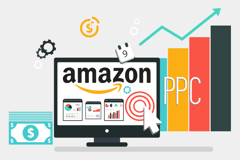Index Content
Companies are constantly looking for the most effective way to communicate with their target audience. Their intention is to reach the maximum number of potential customers with their messages. They want to get into the consumer's mind and persuade them to take an interest and buy their products and services.
The arrival of the Internet has radically changed the way we do advertising and marketing. Many companies have left conventional advertising behind and have started to introduce in their strategies the so-called Digital Marketing, which introduces a new form of bidirectional communication. Thanks to the Internet, users also participate in the communicative process.
Today, conventional advertising is still present on many platforms, although many seem to have forgotten it. This type of advertising is also called one-way advertising.
One-way advertising
To understand this concept, we must first consider what one-way communication is. One-way communication is a communication flow that is transmitted only from sender to receiver. The receiver only receives information, but does not send messages.
There is no feedback from the receiver. Information flows in one direction only. When there is no feedback from the receiver, it is said that we are not talking about communication, but about information. For a communication process to take place, there must be a sender, a message and a receiver.
When we talk about one-way advertising, we see that it has all the characteristics of one-way communication. This is the type of advertising that is introduced in traditional advertising.
Traditional advertising is the one that uses traditional media (press, radio and television) to send a message to a receiver in a unidirectional way.
The company uses traditional channels such as radio, media and television to reach viewers. They do not expect a response from the user, but only transmit a message with the intention of reaching the viewer. It is unidirectional because the advertiser transmits the message and the receiver receives it without participating in the communication process.
Disadvantages of one-way advertising
With the current boom in Digital Marketing , traditional or one-way advertising has a number of disadvantages:
- Lack of segmentation. This type of advertising is presented through a channel without attending to the previous needs of consumers. If you do not receive information from users about your advertising campaigns in these media you will not know who has seen them and who has not. You do not know the audience you are reaching. This is going to make it difficult for the advertiser or company to carry out a correct market segmentation.
- One-way advertising is much more expensive than digital marketing advertising. Producing an ad, hiring the actors who are going to be part of it and making an agreement with the media is going to be expensive. You hire the media to insert your ads in their content. It is not the same as publishing my own ad on my web platform or social networks.
- Intrusive advertising: This is advertising that intrudes on the user. It is not advertising that comes to the user based on their interests or previous searches. This takes away all its value, as it is nothing more than promoting a brand, product or service.
- It is difficult to measure results. We do not know the audience it reaches, we do not receive information from the users who have received our content, we do not have any data to measure the results. It is a very difficult task to measure the results of traditional advertising. We cannot monitor whether the advertisement has been effective or whether, on the contrary, we should modify it.
One-way vs. two-way advertising
The advent of the Internet has meant a shift from one-way advertising to two-way advertising, from traditional advertising to digital marketing.
While in one-way advertising there is no feedback, two-way advertising is based on feedback from the sender.
It is a two-way communication because in this case the receiver does participate in the communicative process. Both the sender and the receiver fulfil their role in the communication process. Moreover, if there is no feedback from the receiver, it could be said that the communication is not effective.
Unlike unidirectional advertising, bidirectional advertising is developed through other channels. It no longer uses traditional channels, but takes advantage of new digital platforms such as social networks or websites to advertise its products or services.
This bidirectional advertising is introduced in new Digital Marketing strategies such as branded content or inbound marketing.
In contrast to conventional advertising, bidirectional advertising has a large number of advantages:
- Thanks to its transparency, there is a greater degree of trust between the sender and the receiver.
- Direct relationship between company and client: We know what our client's opinions are because there is a communication process between the advertiser and the consumer.
- We can measure results. The fact of having a communication between sender and receiver will guarantee that we will have responses from our client. We obtain information from the client that can be relevant to measure the results of our advertising campaigns. In addition, this information can help us to analyse the user's complaints or suggestions to improve our products and services. We can propose solutions to certain problems.
- Users feel more valued because we involve them in our brand, showing that their opinion matters to us.
- Humanisation of the brand: we get closer to the customer and we can influence the purchase decision.
One-way advertising is the one we find on television or in the media. It is the one that interrupts our favourite TV programmes or the one that appears just at the best moment of the film. Although it is advertising in which we, as receivers, do not participate, it has evolved and created another type of advertising, two-way advertising. Although the latter is full of possibilities, the former is still part of our daily lives. We hope this post has resolved your doubts!





